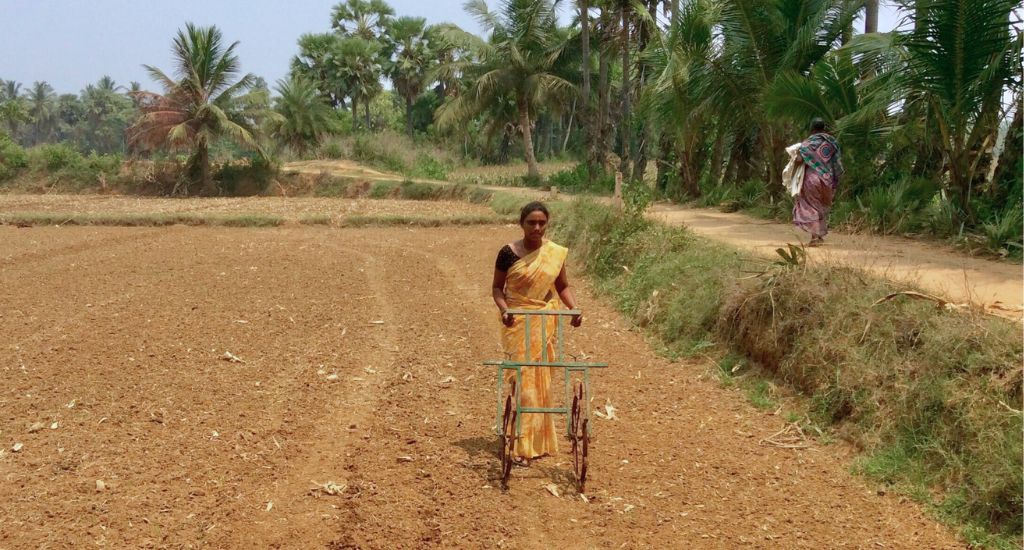
Machine eases work, empowers Andhra women labourers
In Srikakulam, zero tillage in maize crop sowing through the double wheel marker reduces workload for women.

In Srikakulam, zero tillage in maize crop sowing through the double wheel marker reduces workload for women.
Summer is upon the country and a swarm of farmhands harvests rows of maize and chops up ears, husks and stalks – labouring on as the sun beats down on the fields of a village in Srikakulam, a coastal district in northern Andhra Pradesh.
On the way back home at the end of a hard day’s work in the scorching heat, 30-year-old Hymavathi Burle refects with a glucose drink. Despite intense labour during harvest, maize sowing has brought her some relief. Two years ago, bending down to sow seeds would cause her shoulders, back and neck to ache.
A simple but “ground-breaking” innovation has made sowing less labour-intensive and time-consuming. Combined with this farm equipment, called the “double wheel marker”, the novel agriculture technique of “zero tillage” has increased the yield from the fields of Andhra Pradesh, one of the top maize-producing states in India.
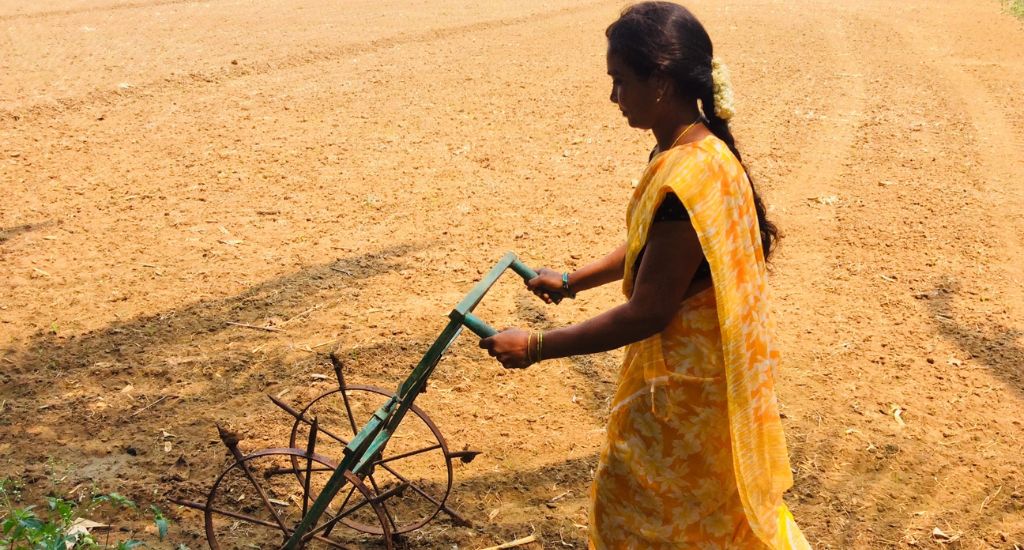
The hand-driven double wheel marker was designed by scientists and a team from Dr Reddy’s foundation, a Hyderabad-based non-profit, and improvised by L Satyanarayana, a farmer from Pathivadapalem village in Srikakulam district, some years ago.
It is an easy-to-use device made of iron rods welded together and affixed with two wheels and mechanical arms that burrow equal-sized holes in the soil for sowing seeds. It looks like a plain wheelbarrow, minus the tray.
Before its invention, women labourers like Hymavathi had to dig holes with a stick – called “borugu” – and sow seeds, their backs bent all the while. Bodyache was common and Hymavathi had to take medicines or apply balm to ease the pain.
Now, one pushes the burrowing farm device and two others plant seeds. They take turns with the device and that allows the sowers to straighten their backs. Plus, they finish the entire operation by spending less time.
“It used to take a day to cover 0.2 acre with three labourers. Now, 0.5 acre can be sowed easily,” said Ramanamma Pisini of Kosta village, who couldn’t thank the “machine” enough for cutting down her time on the farm, while fetching better wages as she could now sow more.
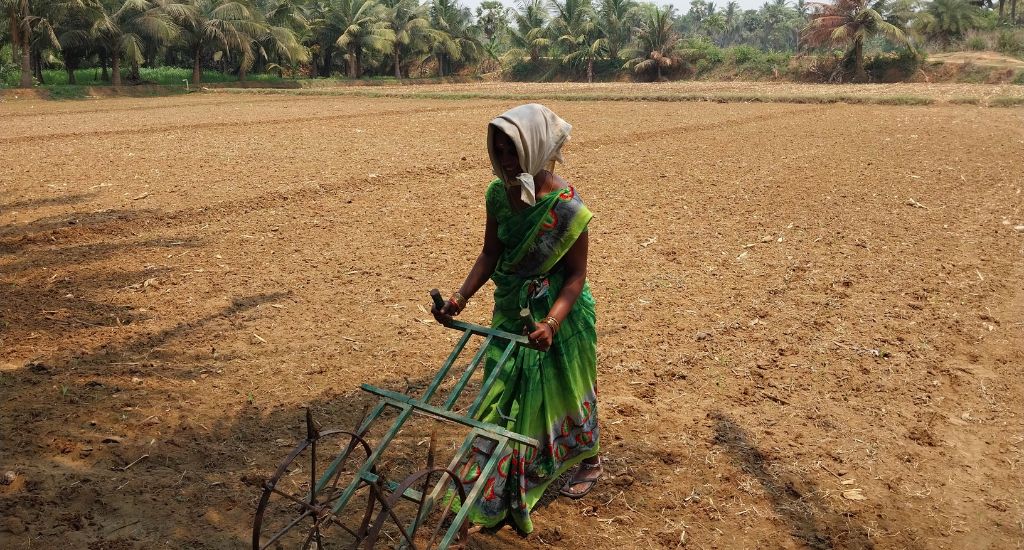
In Hymavathi’s village of Venkataraopeta in Ranasthalam block, four such machines are available and these are extensively used during the maize-sowing months: October-November. The crop is harvested typically by March-April.
Hymavathi earns Rs 200 as daily wages – an increase of 33%. She used to get Rs 150 before the “double wheel marker” came to her village a year ago.
“Still, women’s wages are piffling. Way below Rs 500 to Rs 600 that men get,” she said.
Many agricultural families live in modest houses with palm-leaf roofs. Most are small farmers, owning less than two acres, while some are sharecroppers. They don’t have access to modern agricultural techniques and services, as well as finance.
Zero tillage reduces the cost of cultivation as there is no heavy mechanisation involved. A simple implement, the double wheel marker, does the work.
Extreme weather events like drought and cyclones barrelling down from the Bay of Bengal have also led to low productivity and crop failures.
But there’s help in hand. As part of regenerative agriculture, Hyderabad-based non-profit, Dr Reddy’s Foundation has introduced practices like “zero tillage” that increases crop yield and reduces labour, expenses and time (at least by a month) as maize seeds are sown without ploughing the soil.
This allows the soil to absorb the mulch from the previous crop. Zero tillage also prevents greenhouse gases trapped in the soil from escaping.
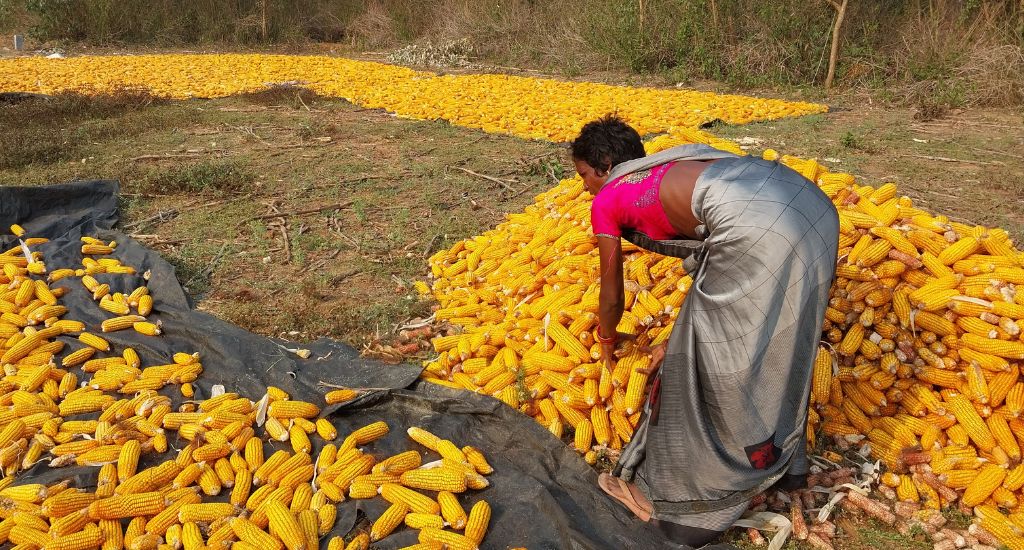
Zero tillage does not disturb the soil and direct sowing prevents greenhouse gas emissions. In a maize farm, zero tillage reduces about 15-30 days of labour by saving land preparation costs and time. Thanks to this, farmers can now grow an extra crop during summer.
“Zero tillage reduces the cost of cultivation as there is no heavy mechanisation involved. A simple implement, the double wheel marker, does the work. As farmers are saving on machine rentals, they can be persuaded to hike the wages of farmhands,” said Suman, associate director of operations at Dr Reddy’s Foundation.
The foundation’s work covers 50,000 acres under zero tillage in maize production in Srikakulam alone. It was 6,000 acres in 2022.
Suman said the device costs Rs 2,500, or somewhere thereabout, and the foundation has made available 800 of them in the district. “It is given to lead farmers identified by the foundation. They are helping spread technological knowledge.”
Many of these women farmers are burdened additionally with household chores – cooking, doing the dishes, cleaning, and taking care of kids. Their day starts at dawn and ends after dinner.
During harvest season, corncobs are brought home and spread on large mats for a sunbath.
But what these women earn is a pittance. Women get paid more or less Rs 6,000 a month if they work every day, said 32-year-old Sathyavathi Burle from Hymavathi’s village.
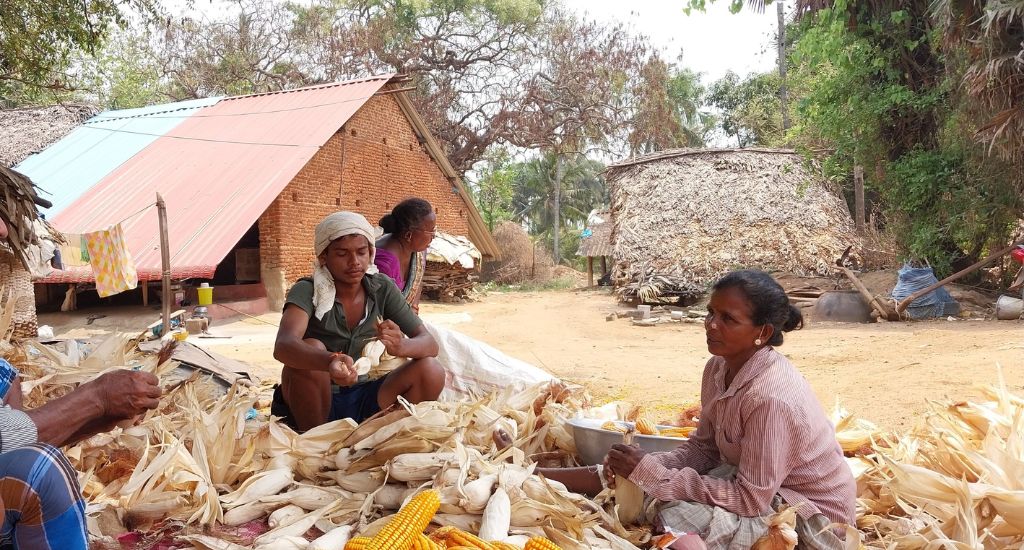
In Derasam village, 50-something Ramanamma Dannana owns no land. She has little option but to work every day. But the “double wheel marker” has lessened her burden. Same for Appamma Dannana, who fends for the family because her husband is an alcoholic.
All of them hope the “double wheel marker” and “zero tillage” farming will close the persistently stubborn pay gap between how much women and men earn, now that big farmers are saving on tractor and plough cattle expenses.
Farmhands like Tauru Kotthakotla keep whatever extra she earns in the bank. They all know the importance of savings when there’s no work for days on end, especially when cyclones submerge fields and flatten crops.
“The sea is about 7km away and the full impact of the cyclone was felt. There was no power for several days,” said Hymavathi, recalling one such fearsome storm.
The lead image at the top shows Hymavathi Burle with the double wheel marker (Photo by Photo by Deepanwita Gita Niyogi)
Deepanwita is a journalist based in New Delhi. An alumna of Asian College of Journalism, she writes about rural development, gender and climate change.